45 Years of Laser Leadership
LLNL’s experimental laser programs were consolidated into a single division, known as Y Division, on July 10, 1972. In the ensuing 45-plus years, increasingly complex and energetic laser systems, each with five to ten times more energy than its predecessor, have enabled cutting-edge research in inertial confinement fusion (ICF), high energy density science, nuclear weapons stockpile stewardship, Discovery Science, and laser fusion energy. Here are brief descriptions of the groundbreaking lasers created by the Laboratory’s laser pioneers:
Janus
The one-beam, 10-joule Janus laser, built in 1974 to conduct target compression experiments, carried out the first fusion experiments at the Laboratory. Janus demonstrated for the first time a controlled thermonuclear reaction in laser-imploded deuterium–tritium fuel capsules. It also spurred the development of many important diagnostic techniques, including a method for obtaining a high-resolution image of an imploded target and measuring its temperature, which led to better-characterized experiments. Later that year, a two-beam Janus (40 joules) was used to gain a better understanding of laser-target interactions and thermonuclear physics. 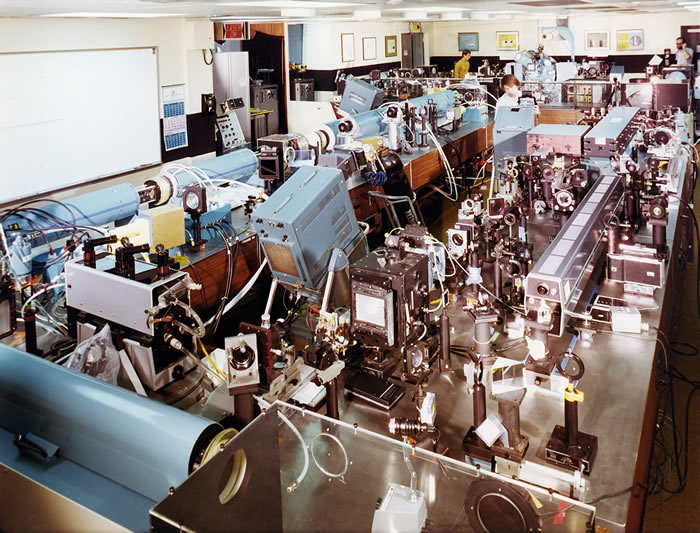 The Janus Laser as it looked in 1975.
The Janus Laser as it looked in 1975.
Cyclops
The one-beam Cyclops was also completed in 1974. Its beamline was a prototype of the yet-to-be built 20-beam, 10.2-kilojoule Shiva laser.
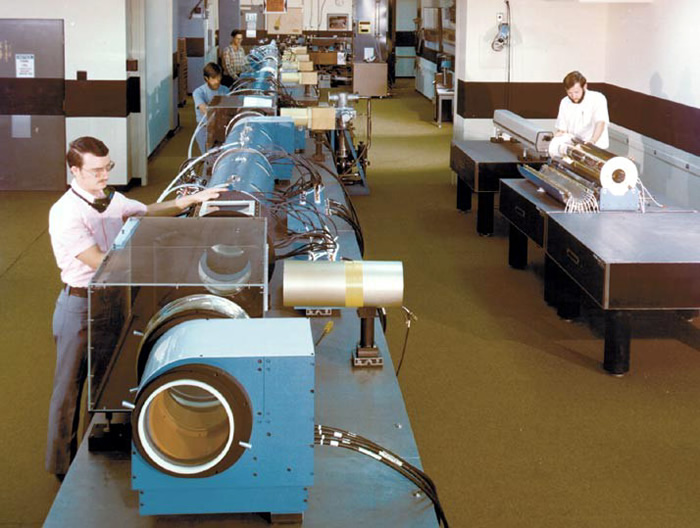 The single-beam Cyclops laser around the time of its completion in 1974.
The single-beam Cyclops laser around the time of its completion in 1974. Argus
The two-beam Argus came online in 1976. Use of Argus increased knowledge about laser-target interactions and laser propagation limits and helped LLNL Laser Program researchers develop technologies needed for the next generation of laser fusion systems. Argus was the first laser to have spatial filters engineered into it so that the beam could be relayed from one amplifier to another while preventing the amplification of the intensity fluctuations, or spikes, that led to optical damage known as angel’s hair, or filamentation.
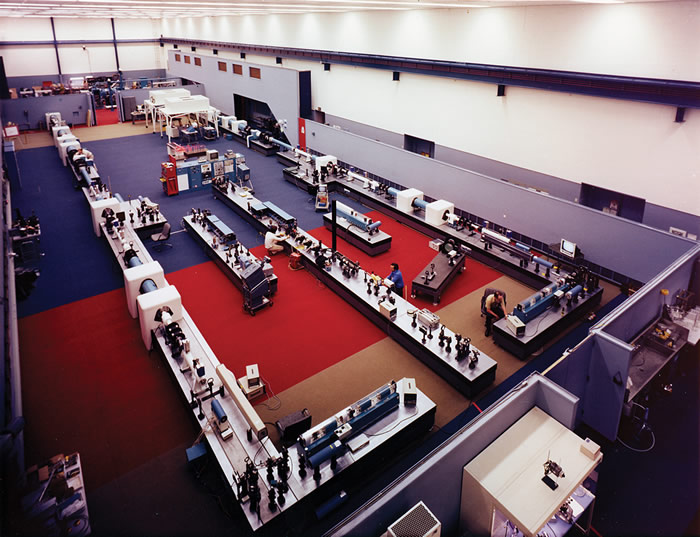 Laser bay of the two-beam Argus laser. With Argus, LLNL researchers proved the scalability of neodymium glass fusion lasers, setting the stage for further developments in the decades ahead.
Laser bay of the two-beam Argus laser. With Argus, LLNL researchers proved the scalability of neodymium glass fusion lasers, setting the stage for further developments in the decades ahead. Shiva
In 1977, just five years after the consolidation of the Laboratory’s disparate laser activities into a single focused Laser Program, the 20-beam Shiva laser delivered 10.2 kilojoules of infrared laser energy in less than a billionth of a second in its first full-power firing. In a key discovery, Shiva experiments showed that infrared laser light has too long a wavelength, as energetic super-hot electrons generated by infrared light in the target’s plasma absorb the laser light and inhibit compression.
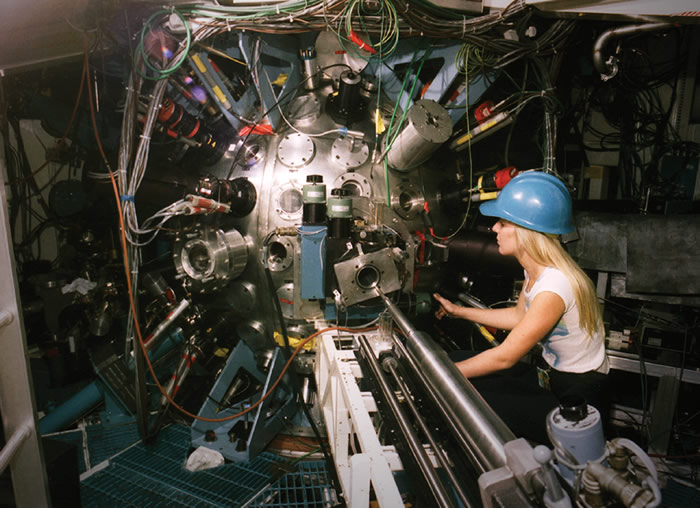 In June 1979, Shiva compressed fusion fuel to a density more than 50 times greater than its liquid density—about the density of lead.
In June 1979, Shiva compressed fusion fuel to a density more than 50 times greater than its liquid density—about the density of lead. Novette
In 1983, Novette became the first laser to be engineered with optical frequency converters made of potassium dihydrogen phosphate (KDP) crystals, which convert the infrared light to shorter ultraviolet wavelengths. The 2.5-kilojoule Novette was a test bed and interim target facility between Shiva and the 10-beam Nova.
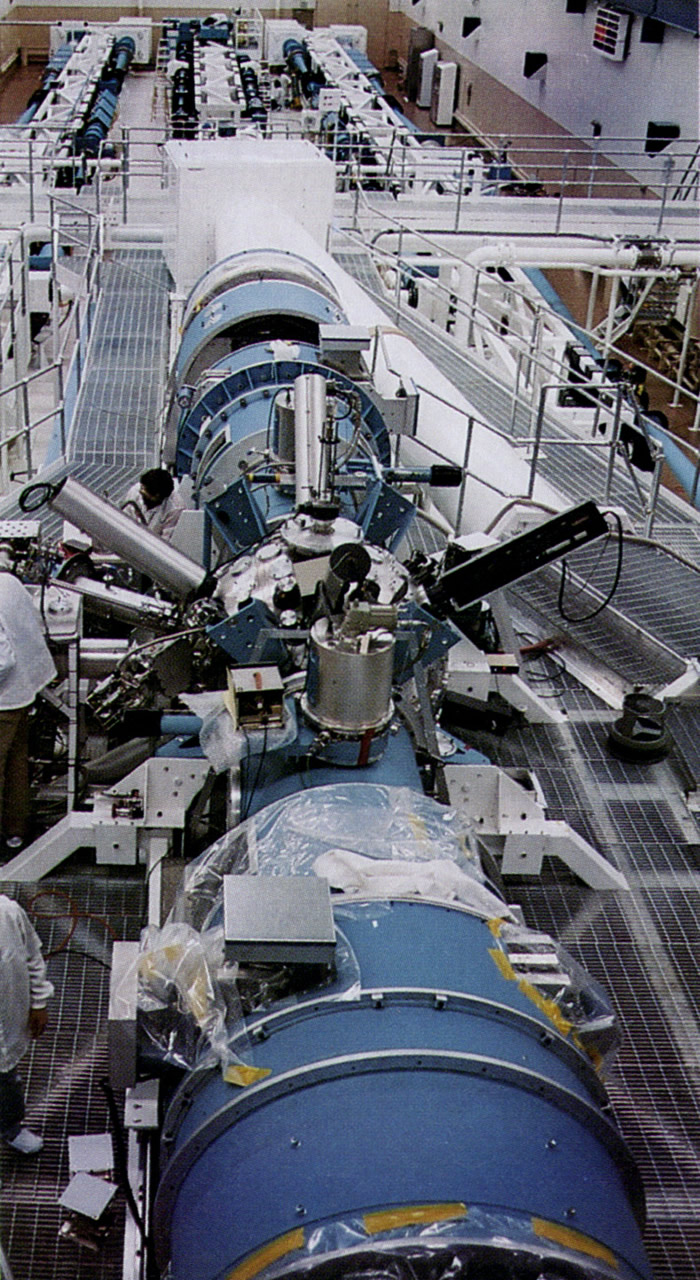 The Novette target chamber (the metal sphere with diagnostic devices sticking out), which was reused from the Shiva project; two newly built laser beamlines are visible in the background.
The Novette target chamber (the metal sphere with diagnostic devices sticking out), which was reused from the Shiva project; two newly built laser beamlines are visible in the background. Nova
More than ten times more powerful than Shiva, Nova produced up to 150,000 joules of infrared and 40,000 joules of ultraviolet laser light in 2.5-nanosecond pulses, for up to 16 trillion watts of power. Nova produced the largest laser fusion yield to date in 1986—a record 11 trillion fusion neutrons. In 1987, Nova compressed a fusion fuel target to about one-thirtieth of its original diameter. The first Tron movie used the Nova laser for its location shots.
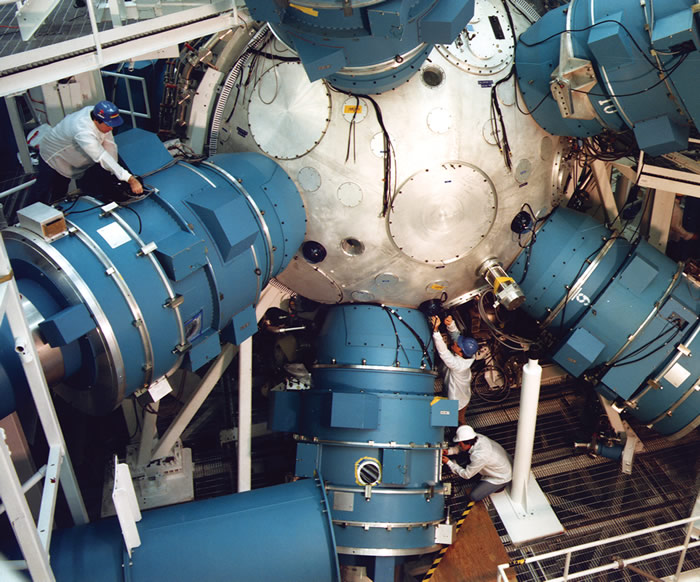 The Nova target chamber. Nova was completed in 1984.
The Nova target chamber. Nova was completed in 1984. Beamlet
From 1994 to 1998, the 8.3-kilojoule Beamlet, the single-beam prototype of the National Ignition Facility, demonstrated that the multipass laser architecture conceived for NIF was capable of meeting the fluence (energy per unit area) requirements prescribed by the National Academy of Sciences, a necessary milestone to proceed with NIF.
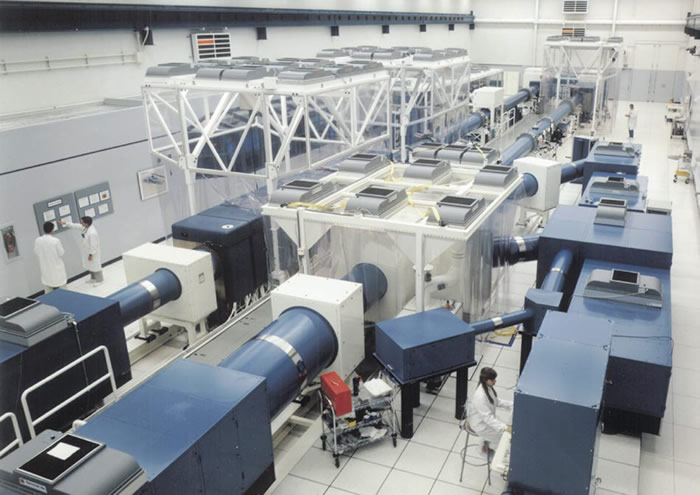 The Beamlet laser, a scientific prototype of one of NIF’s 192 beamlines.
The Beamlet laser, a scientific prototype of one of NIF’s 192 beamlines. NIF
Ground was broken for the 192-beam, 1.8-megajoule, 500-terawatt National Ignition Facility in 1997 (see “Building the World’s Largest Laser”). In 2003, during the NIF Early Light campaign, NIF produced 10.4 kilojoules of ultraviolet laser light in a single beamline, setting a world record for laser performance. More records for laser energy produced and fusion energy yield were to follow in the years after NIF’s dedication in 2009.
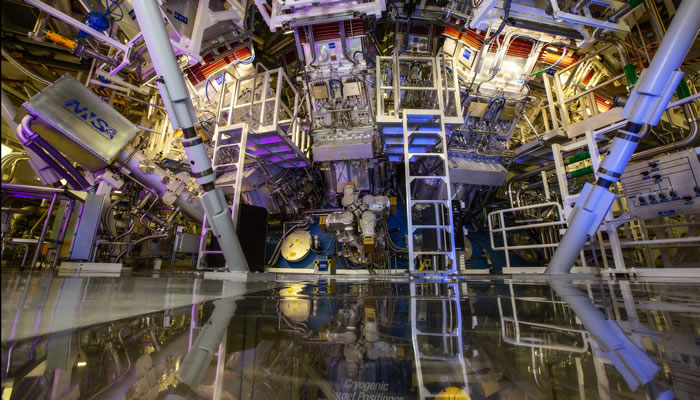 The NIF Target Bay, which also served as the set for the engine room of the Starship Enterprise in the 2013 film “Star Trek: Into Darkness.” NIF’s 192 laser beams converge at the center of this giant sphere to make the tiny hydrogen fuel pellet implode. Credit: Jason Laurea
The NIF Target Bay, which also served as the set for the engine room of the Starship Enterprise in the 2013 film “Star Trek: Into Darkness.” NIF’s 192 laser beams converge at the center of this giant sphere to make the tiny hydrogen fuel pellet implode. Credit: Jason Laurea Next Up: Building NIF



